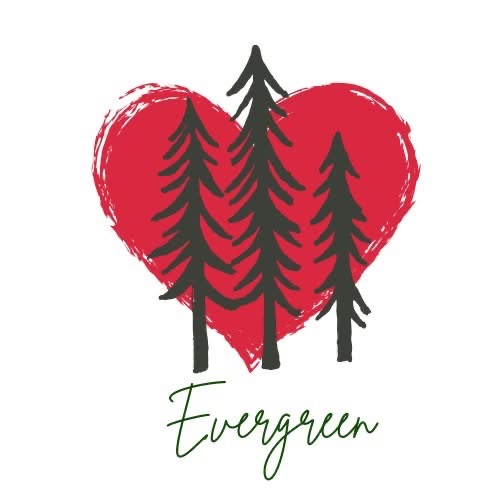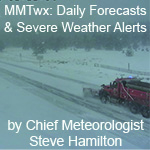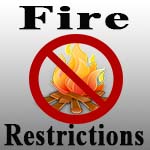- Posts: 50
- Thank you received: 0
Feeding your horse in the winter
- Shannon Harland-DVM
-
 Topic Author
Topic Author
- Happy Camper
-

Less
More
10 Jan 2011 09:07 #1
by Shannon Harland-DVM
Feeding your horse in the winter was created by Shannon Harland-DVM
With winter here it is important to think about feed considerations for your horse. Horses will burn more calories during the colder temperatures in order to maintain body temperature, however, the amount of increased calorie consumption can vary depending on where a horse is kept. Horses kept in a stall and blanketed will not have to work as hard to maintain their body temperature as those kept out in pasture and exposed to the elements, and horses that are not fed enough calories will use up their fat and muscle stores and lose weight. The main thing to remember about winter management is that hay should be the main source of feed.
As the fiber in hay is digested in the cecum and large intestine, it generates heat which horses use to help maintain their temperature. Grass hay is usually adequate for most horses with a ration balancer supplement. Many people think that they need to feed their horse a “hot” feed such as grain to help the horse stay warm, but grain is digested in the small intestine and the heat given off is significantly less. There is also an increased risk of colic or founder if too much grain is fed. Most horses need to eat 1.5-2% of their body weight in feed daily to meet their energy requirements (depending on their level of exercise, metabolism, etc.). For a 1000 lb horse, this might mean feeding 15-20 lbs of dry matter feed daily. Some “easy keepers” with slow metabolisms or horses getting minimal exercise may need less. “Hard keepers”, older horses, and horses in intense exercise may need more. On average, for every 1F drop in temperature below 40F, there is an increase of 1% of the energy requirement for a horse at maintenance. As previously mentioned, increasing the amount of roughage such as grass hay is usually the best way to meet these increased needs. For picky eaters or older horses without good teeth for chewing hay, you may consider a complete ration pellet instead.
It is important to check your horse’s body condition during the winter to make sure he/she is being fed adequately. It can be challenging to get an accurate assessment due to the long hair coat which is why it is important to periodically run your hands over your horse. An estimate can be made by feeling along your horse’s topline and along the ribs. The ribs should have slight fat covering but still be able to be felt, and there should be a thin layer of tissue along the side of the backbone forming a shallow upside down ‘V”. If the ribs are hard and easy to feel and the topline forms a deep “V”, the horse is too thin. If you cannot find the ribs or the backbone, the horse is too fat. Any changes in feed should be made gradually over 5-7 days.
Another important consideration is maintaining adequate water intake. The average 1000lb horse drinks about 10-12 gallons of water per day. In colder temperature this amount can decrease since horses typically don’t like to drink water below 40F. Drinking less water can lead to increased incidences of impaction colic so it is important when temperatures are below freezing to check your horse’s water supply and break any ice that may have formed on the top. Water heaters are useful to keep the water at an appropriate temperature and tend to encourage horses to drink more water.
If you have questions about what feed is appropriate for your horse please call the hospital and any of the doctors are happy to discuss a feeding program for your horse.
As the fiber in hay is digested in the cecum and large intestine, it generates heat which horses use to help maintain their temperature. Grass hay is usually adequate for most horses with a ration balancer supplement. Many people think that they need to feed their horse a “hot” feed such as grain to help the horse stay warm, but grain is digested in the small intestine and the heat given off is significantly less. There is also an increased risk of colic or founder if too much grain is fed. Most horses need to eat 1.5-2% of their body weight in feed daily to meet their energy requirements (depending on their level of exercise, metabolism, etc.). For a 1000 lb horse, this might mean feeding 15-20 lbs of dry matter feed daily. Some “easy keepers” with slow metabolisms or horses getting minimal exercise may need less. “Hard keepers”, older horses, and horses in intense exercise may need more. On average, for every 1F drop in temperature below 40F, there is an increase of 1% of the energy requirement for a horse at maintenance. As previously mentioned, increasing the amount of roughage such as grass hay is usually the best way to meet these increased needs. For picky eaters or older horses without good teeth for chewing hay, you may consider a complete ration pellet instead.
It is important to check your horse’s body condition during the winter to make sure he/she is being fed adequately. It can be challenging to get an accurate assessment due to the long hair coat which is why it is important to periodically run your hands over your horse. An estimate can be made by feeling along your horse’s topline and along the ribs. The ribs should have slight fat covering but still be able to be felt, and there should be a thin layer of tissue along the side of the backbone forming a shallow upside down ‘V”. If the ribs are hard and easy to feel and the topline forms a deep “V”, the horse is too thin. If you cannot find the ribs or the backbone, the horse is too fat. Any changes in feed should be made gradually over 5-7 days.
Another important consideration is maintaining adequate water intake. The average 1000lb horse drinks about 10-12 gallons of water per day. In colder temperature this amount can decrease since horses typically don’t like to drink water below 40F. Drinking less water can lead to increased incidences of impaction colic so it is important when temperatures are below freezing to check your horse’s water supply and break any ice that may have formed on the top. Water heaters are useful to keep the water at an appropriate temperature and tend to encourage horses to drink more water.
If you have questions about what feed is appropriate for your horse please call the hospital and any of the doctors are happy to discuss a feeding program for your horse.
Please Log in or Create an account to join the conversation.
Time to create page: 0.126 seconds






